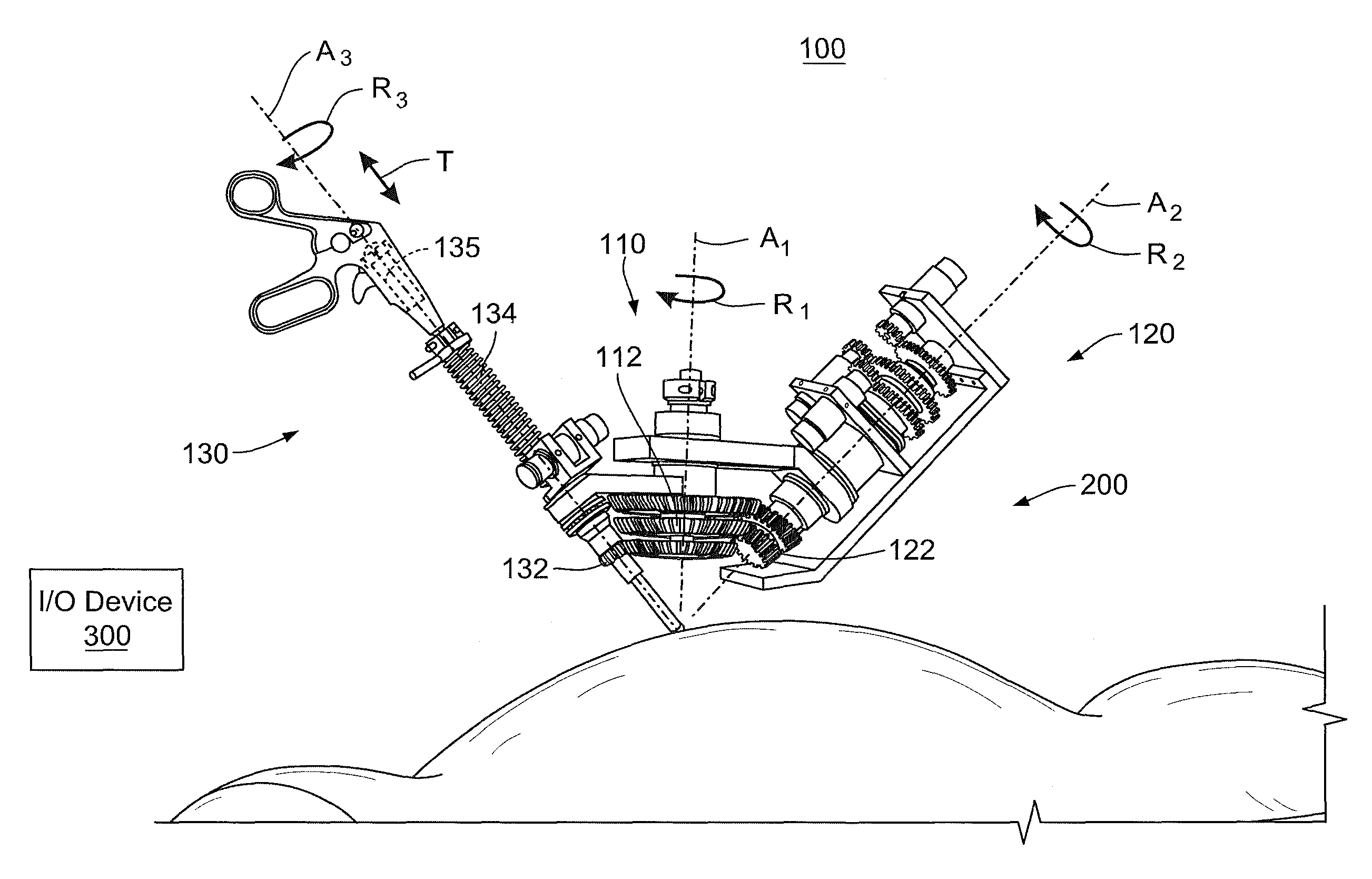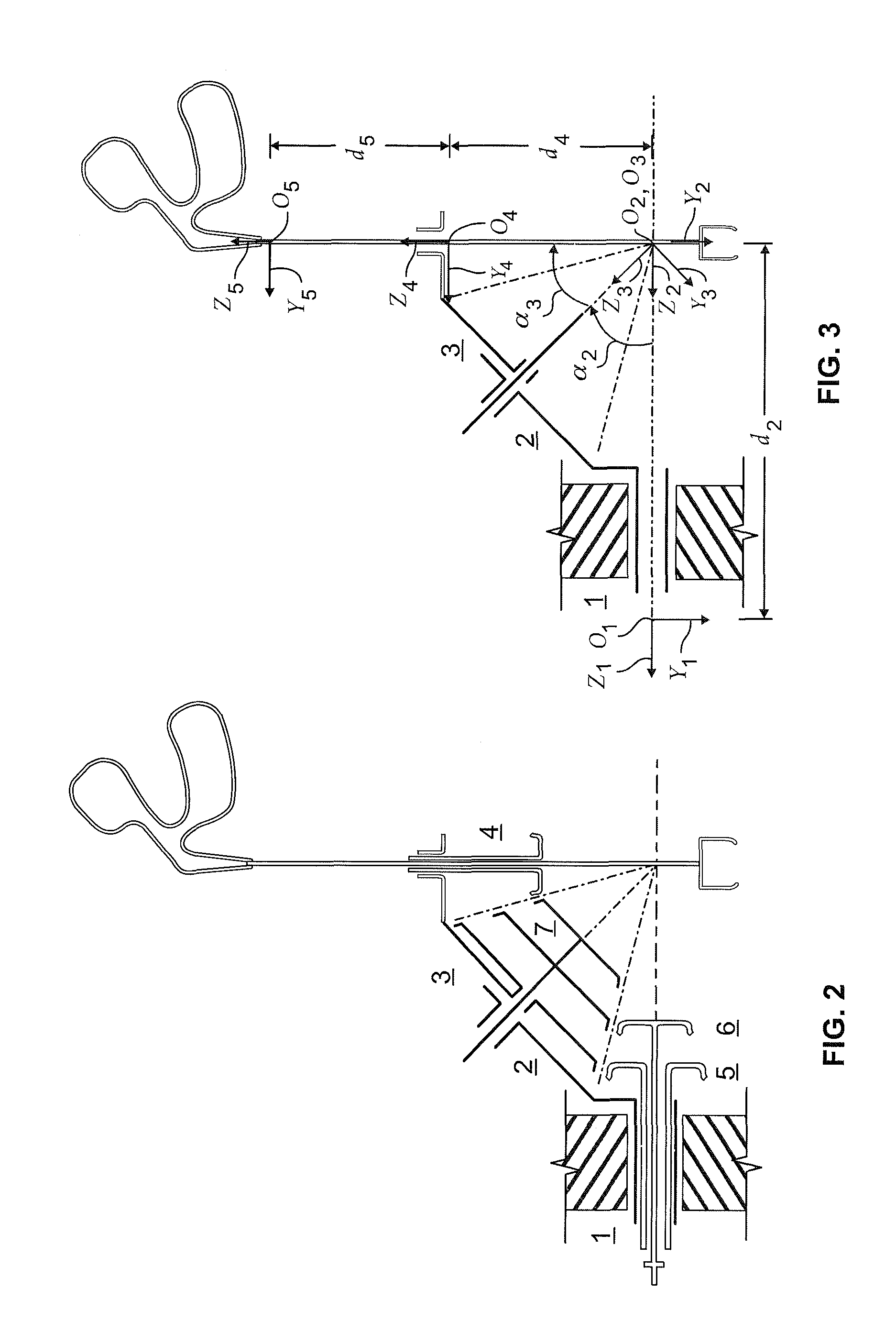System and methods for controlling surgical tool elements
a technology of surgical tools and control methods, applied in the field of minimally invasive surgery, can solve the problems of limiting surgical dexterity and vision, limiting the maneuverability of surgical tools, and competition for precious space in the operating room environment, so as to reduce or eliminate calibration time, reduce the effect of “full circle effect” and be easy to control
- Summary
- Abstract
- Description
- Claims
- Application Information
AI Technical Summary
Benefits of technology
Problems solved by technology
Method used
Image
Examples
Embodiment Construction
[0042]As noted above, the invention is not limited to any particular application or use. In addition to minimally invasive surgery, uses of the present invention include, for example, open surgery, including surgery from a remote location, and microsurgery.
[0043]The structure of the surgical robot system is optimized based on kinematic analysis including forward and inverse kinematics. Forward kinematics is computation of the position and orientation of the end effector of the robot as a function of its joint angles. For purposes of this application the end effector is the sleeve device, and more specifically the tip of the tool element held by the sleeve device. Inverse kinematics is the process of determining the parameters of the surgical robot system in order to achieve a desired pose, otherwise referred to as motion planning.
[0044]Solving for the optimum surgical robot system is approached as a set of rigid mechanisms connected by joints. Varying angles of the joints yields an ...
PUM
 Login to View More
Login to View More Abstract
Description
Claims
Application Information
 Login to View More
Login to View More - R&D
- Intellectual Property
- Life Sciences
- Materials
- Tech Scout
- Unparalleled Data Quality
- Higher Quality Content
- 60% Fewer Hallucinations
Browse by: Latest US Patents, China's latest patents, Technical Efficacy Thesaurus, Application Domain, Technology Topic, Popular Technical Reports.
© 2025 PatSnap. All rights reserved.Legal|Privacy policy|Modern Slavery Act Transparency Statement|Sitemap|About US| Contact US: help@patsnap.com



